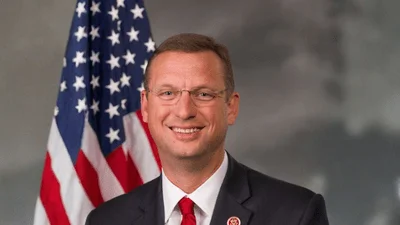Deb Haaland Secretary at U.S. Department of Interior | Official website
The Biden-Harris administration has announced new measures to enhance wildfire detection using satellite technology. The Department of the Interior and the U.S. Department of Agriculture (USDA)’s Forest Service have signed an agreement with the Department of Commerce’s National Oceanic and Atmospheric Administration (NOAA) to utilize data from NOAA's Geostationary Operational Environmental Satellite — R series (GOES-R) for rapid wildfire detection and reporting. This initiative is backed by a $20 million investment from the President’s Bipartisan Infrastructure Law, with $10 million each from Interior and Agriculture.
Under President Biden’s Investing in America agenda, the Bipartisan Infrastructure Law allocates $5 billion over five years to these Departments for wildfire preparedness, fuels management, post-fire restoration, and fire science. Secretary of the Interior Deb Haaland emphasized the importance of this collaborative effort in improving emergency response capabilities: “By using expanded satellite capacity to pinpoint wildfire ignitions and provide real-time data for wildfire managers, this partnership with NOAA will enable the Interior and Agriculture Departments to respond to wildfires more rapidly and make informed decisions for firefighting operations and public safety.”
Secretary of Agriculture Tom Vilsack highlighted that while wildland firefighting will always require skilled personnel on the ground, real-time information can reduce risks and improve response times: “This partnership is one of the many ways we are investing in technology to improve firefighter and community safety.”
Secretary of Commerce Gina Raimondo noted that climate change is increasing wildfire threats across the country: “This new partnership...will help expand our ability to detect wildfires, improve response times, and keep families in western communities out of harm’s way.”
The use of GOES-R satellite data will allow early detection of wildfires, providing firefighters with detailed information on conditions, faster hot spot identification, and real-time tracking of fire progression. These satellites often detect fires before they are reported on the ground or via 911 calls. Additionally, GOES-R observations aid in monitoring smoke plumes in near real time, which is crucial for directing aerial firefighting efforts hindered by poor visibility. The data also contribute to better air quality forecasts, enhancing public health safeguards.
These efforts align with recommendations from the Wildland Fire Mitigation and Management Commission established through the Bipartisan Infrastructure Law. The Commission's September 2023 report to Congress included 148 recommendations aimed at improving federal policies on wildfire mitigation, suppression, and management.





